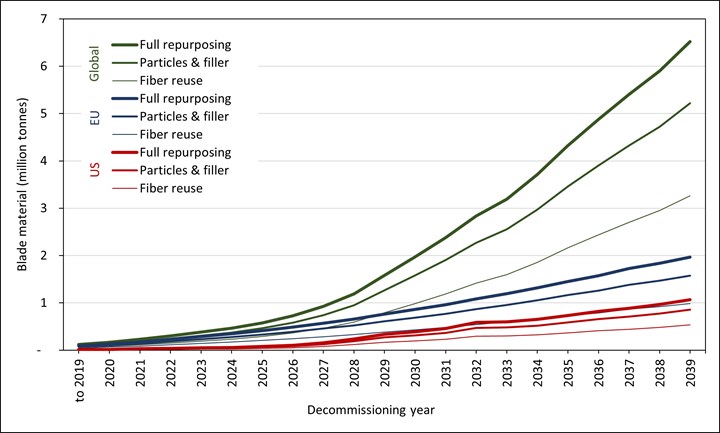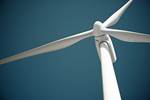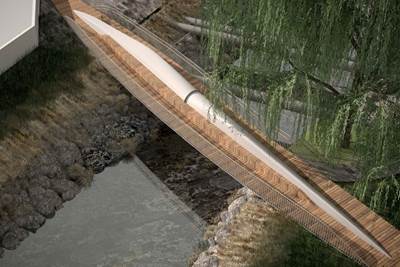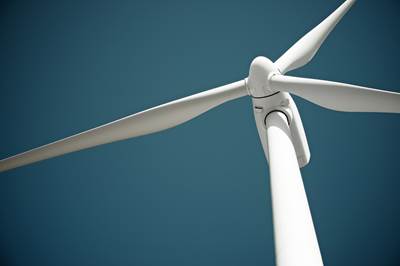
Figure 1. This figure provides an estimate of the maximum and minimum tonnage of EOL blade material for existing wind blades installed up to (but not after) 2019 in entire world (global), the U.S. and Europe (European Union, plus U.K.). The maximum scenario is based on the shortest service life,15 years, and the higher 14 t/MW blade conversion factor. The minimum scenario is based on the longest service life of 30 years and the lower 10 t/MW blade conversion factor. The predictions are based on total blade mass. All figures credit: Emma Delaney QUB (Re-Wind Network)
There have been a number of journal papers and magazine articles published recently that have addressed the issue of wind turbine blade “waste.” Much of the evidence presented in these articles is felt to be too speculative in the opinion of the authors. Work undertaken by the Re-Wind Network team has raised six key issues for discussion of blade end of life (EOL). These include how to define wind turbine end of life; what is meant by recycling; the quoted time frames; mass and volume conversion issues; definition of tonnage; and location. We discuss these issues and the implications for predicting future blade waste and recycling potential below.
Wind turbines are typically designed for a 20-year service life. By the end of 2019, only 12,149 megawatts (MW) had reached their 20-year service life (i.e., those installed up to 2000). The common assumption is that one MW translates to a mass of 10 tonnes (10,000 kilograms) of rotor blade material, which gives 121,490 tonnes as the estimated number for EOL 2019 wind turbines. However, by 2019, global wind farm capacity had reached 652,190 MW (652 gigawatts (GW) which translates to 6,521,900 tonnes of blade material currently in service).
During the period up to 2000, the average capacity of an installed turbine was one MW. Therefore, 12,149 turbines are assumed to have been decommissioned by 2019. This translates to a global quantity of 36,447 blades that are assumed to have reached the end of their service lives. Unfortunately, data on the actual number of blades decommissioned is sparse. For blades installed from 2000 to 2019, one can make predictions for future EOL scenarios. These are most often based on the above assumptions of a 20-year service life and 10 tonnes/MW. However, these assumptions may be grossly incorrect for several reasons, which are outlined below.
What does end of life (EOL) mean?
We define EOL as “the time at which blades are no longer performing their original function on their original turbine.” It may in fact mean any of the following “times”:
End of design life (EODL) and extending life by permit extension: Many energy providers or local municipalities are promoting extending the useful life of existing turbines by passing local legislation to extend the operating permits of the turbines (and hence the blades themselves) from the original 20 years to 30 or even 40 years with no change to the turbine or blades. Many wind farms received operating permits for 20 years, or permits with no specified expiration date, when constructed. In this case, the blade continues to serve its original function.
EODL and extending life by retrofitting: Many turbine and blade OEMs are promoting retrofitting and remanufacturing to extend the life of blades. This is often packaged with blade length increases or turbine upgrades to increase the power output of the turbine. This typically also requires additional permits be issued. In this case, the blade continues to serve its original function.
End of functional life (EOFL) and decommissioning, dismantling and repowering: When incentives are in place, many energy providers are choosing to “repower” their wind farms. In this case, the blades are removed from the turbine and enter the waste stream or recycling industry. In many countries, repowering a wind farm is afforded the same incentives (tax breaks, typically) as are completely new wind farms.
EOFL and dismantling due to in-service damage: A significant number of blades (estimates are 2-5%) are seriously damaged at some time in their service lives due to lightning strikes, structural deterioration, leading-edge erosion, design and manufacturing errors, as well as other unforeseen events such that they must be removed and replaced early.
End of location life (EOLL) and decommissioning, dismantling and reselling on the used (second-hand) turbine market: Wind turbine owners (either wind farm owners or individual off-grid owners) may dismantle their turbines and remove their undamaged blades and try to resell them on the second-hand market for use as spares in other locations or for reinstallation by a new owner at new location where regulation may not be as strict.
EOLL and abandoning: While no evidence of this can be found for entire wind farms, there is some evidence that older, first-generation (1970s and 1980s) small individual turbines are no longer functioning and have been abandoned in-place.
EOLL and stockpiling: Many decommissioning contractors are currently stockpiling blades in the hope of a future with cost-effective recycling options or where landfilling is not an option.
What does recycling mean?
We define recycling in the context of the circular economy as “reuse of the blade material in a new product.” The term may in fact be used for any of the following that have different percentages of material reuse:
Blade disposal as waste: This is, in fact, the extreme “recycling” condition — no recycling — either in landfills or in waste incineration plants. Landfilling has 0% reuse value. However, in many cases, blade waste is incinerated and energy is recovered from the combustion of the organic materials (polymers and balsa wood). Energy recovery or gasification is not called recycling by most definitions, including the one above, and is generally considered to be environmentally harmful. Many jurisdictions have banned landfilling and are restricting incineration due to pollution and land-use impacts. This, however, is the current preferred method due to its low cost. No fibers and no polymers are recycled.
Blade size reduction and constituent material reuse: Many refer to partial recycling as recycling when either the fiber material or polymer material is reclaimed by thermolysis, pyrolysis, solvolysis, fluidized bed, high-voltage pulse fragmentation or other newer technologies. Most currently installed wind turbine blades were manufactured using glass fibers and either polyester or epoxy resins. A number of blades also contain small amounts of carbon fiber to increase their structural properties. If only the fiber is reclaimed, then these processes yield approximately 50% recycling (assuming the fiber mass fraction in the composites is 50%). Current processes that reclaim the polymer monomers for resynthesis in new polymers are only in the experimental stage. This category includes co-processing in a cement kiln (i.e., thermolysis) where the fiber chemical constituents are used as replacements for virgin, mined materials such as sand, clay and limestone in the production of the cement clinker. The polymeric materials provide energy recovery. Blades containing carbon fibers cannot be co-processed due to the negative effect of the carbon on the clinker. Co-processing also yields a 50% recycling percentage.
Blade size reduction and composite material reuse: Many refer to partial recycling as recycling when the composite material is mechanically recycled. This means that the material is reduced in size (shredded, cut and ground to small particles) and reused in a different form as a filler or as a reinforcement in concrete, reinforced plastics or other products. In this case it is estimated that about 80% recycling is achieved due to material losses in the processing.
Blade repurposing for structural reuse: Full recycling is repurposing of the entire wind blade or large parts of the blade for a second life in other infrastructure, building or architectural products. This uses the blade’s unique structural and architectural properties. In this case, 100% of the composite materials (fiber and polymer materials) are recycled.
It is important to point out that at this time only co-processing in a cement kiln and mechanical recycling are at an operational scale. However, the economic viability of these processes is still in question.

Figure. 2. This graph estimates the amount of material that can be diverted from landfills or incinerators as a function of the different technologies for converting the blade composite material to usable “second-life” products in a circular economy, based on a 20-year service life and a 10t/MW blade conversion factor. Energy recovery is not regarded as material reuse.
What time frames should we consider?
There are two time frames to consider when thinking about blade EOL management.
A specific year in the future for existing and future installed turbines: Many authors consider 2050 as the year for which predictions are made. This means that estimation of the installation of future onshore and offshore wind farms needs to be made to predict the future turbine blade waste. It also means estimating the service life of a turbine.
A specific service life for currently installed turbines: Some authors are more comfortable basing their predictions only on the known inventory of installed wind turbines. In this case, there is no estimation of the number of turbines to be installed in the future. However, this still requires estimating the service-life of the blades — 15, 20, 25 and 30 years are commonly used and 20 years is the most common due to the oft-stated 20-year design life.
How to calculate blade mass or volume?
There appears to be no general agreement on how to convert blade or turbine type designation (e.g., LM 13.4, Vestas V52, GE 1.5 MW) to either mass or volume of the waste that will need to be disposed of. Estimates of mass (based generally on turbine-rated power) vary from about 10 tonnes/MW to about 14 tonnes/MW. Estimates of the volume (or the length) of unshredded, full-sized sections of blades, which have been the cause of much consternation in the press due to their volumetric impact on landfills, are based on rotor diameter. A 40-meter-long blade has an estimated volume of 102 cubic meters; a 60-meter-long blade has a volume of 260 cubic meters (or three to seven tanker trucks).
Estimates of mass and volume are made because blade OEMs and turbine manufacturers do not publish exact mass or volume of their blades, which leaves authors to devise other methods to extract this information from often imprecise published information. Also, it is important to point out that while tonnage and volume are important for waste disposal or recycling, the actual number of blades is important for transportation logistics. Decommissioning companies are much more concerned with the number, length and shape of the blades than their exact mass or volume.
What are the units, where is the blade?
There is also no agreement on what is included in the tonnage of material to be recycled or what a “ton” or “tonne” means. A wind blade has approximately 10% material by mass that is metal. This metal is in the steel bushings and bolts used to connect the blade to the hub and the copper or aluminum lightning grounding cable that runs the length of the blade. A metal blade tip may also be used, as well as metal vortex generators.
There is also, unfortunately, mixing of the units ton (2,000 pounds) and tonne (1,000 kilograms or 2,200 pounds) in reported predictions. This is a 10% difference, which may not be insignificant at times.
Also at issue is the region of the world, the country or the local municipality in which the turbine reaches its EOL. An accurate county-wide Geographical Information Science (GIS) model is vital to develop a local plan for blade decommissioning. All of the factors above will be influenced by local laws, regulations, incentives and costs.
How to move forward?
All of these factors lead to significant uncertainty in predicting future blade waste and recycling potential. At best, one can try to bound the predictions for currently installed turbines. The variables that need to be considered are:
- The service life of the turbine — 15, 20, 25, 30 or even 40 years. This in turn depends on the percentage of turbines that will either be extended by permit, extended structurally, repowered, resold, abandoned or stockpiled at the end of their service lives.
- The mass of the blade based on the turbine rated capacity, from 10-14 tonnes/MW.
- The number of blades represented by the tonnage.
- The recycling technology and the percentage of material that is recycled.
- The type of fiber in the blade — glass, carbon and/or other.
- Local policies, geographical conditions, economics or preferred (business as usual) practices in the region in which the prediction is being made.
- The time frame of the study (even for currently installed turbines).
- Whether onshore or offshore blades are considered together or separately since choices will differ significantly based on these two types.
It is important to note that some of the variables above are mutually exclusive. For example, if one assumes for installed turbines a service life of 15 years, one can only make a prediction for 15 years from the date of the study and not for any time period beyond that.
To address these issues we advocate that in order to make a meaningful prediction of blades that will reach their EOL or enter the waste and recycling stream one must include the six variables noted at the outset: how EOL is defined; how recycling is defined; what the time frame is; how mass and volume are determined; how tonnage is defined; and how actual location affects the numbers. To illustrate how these variables can affect predictions we present two extreme upper and lower bounds in Figs. 1 and 2 for EOL and recycling tonnage for currently installed wind turbines based on data reported in the Wood Mackenzie Q1 2020 wind blade database. It can be seen that for any chosen year in the future the differences in quantities can be enormous.
Ultimately, the entire wind turbine supply chain, from the raw material suppliers to the wind farm operators themselves, must bear responsibility for developing the parameters, boundaries and definitions that characterize blade EOL. And the entire wind turbine supply chain must bear responsibility for developing solutions for management of blades that have reached the end of their service. Failure to do so will, inevitably, invite solutions in the form of regulatory oversight, which may or may not meet the challenge. The time is now for the wind turbine supply chain to responsibly, proactively and positively meet this EOL dilemma.
Funding for this research was provided by the National Science Foundation (US), Science Foundation Ireland (Republic of Ireland) and the Department for the Economy (Northern Ireland). Any opinions, findings and conclusions or recommendations expressed in this material are those of the authors and do not necessarily reflect the views of the funding agencies.
Affiliation of Authors:
Lawrence Bank, research engineer, and Russell Gentry, associate professor, School of Architecture, Georgia Institute of Technology, Atlanta, Ga., U.S.
Emma Delaney, Ph.D. student, and Jennifer McKinley, professor, School of Natural and Built Environment, Queen’s University Belfast, Belfast, Northern Ireland, U.K.
Paul Leahy, lecturer, School of Engineering, University College Cork, Cork, Ireland.
Related Content
The lessons behind OceanGate
Carbon fiber composites faced much criticism in the wake of the OceanGate submersible accident. CW’s publisher Jeff Sloan explains that it’s not that simple.
Read MoreTU Munich develops cuboidal conformable tanks using carbon fiber composites for increased hydrogen storage
Flat tank enabling standard platform for BEV and FCEV uses thermoplastic and thermoset composites, overwrapped skeleton design in pursuit of 25% more H2 storage.
Read MoreBio-based acrylonitrile for carbon fiber manufacture
The quest for a sustainable source of acrylonitrile for carbon fiber manufacture has made the leap from the lab to the market.
Read MoreSulapac introduces Sulapac Flow 1.7 to replace PLA, ABS and PP in FDM, FGF
Available as filament and granules for extrusion, new wood composite matches properties yet is compostable, eliminates microplastics and reduces carbon footprint.
Read MoreRead Next
Recycling end-of-life composite parts: New methods, markets
From infrastructure solutions to consumer products, Polish recycler Anmet and Netherlands-based researchers are developing new methods for repurposing wind turbine blades and other composite parts.
Read MoreU.K. launches initiative for recyclable wind turbine blade technologies
The SusWIND initiative, addressing the recyclability and future development of composite wind turbine blades, will be delivered in three developments.
Read MoreAll-recycled, needle-punched nonwoven CFRP slashes carbon footprint of Formula 2 seat
Dallara and Tenowo collaborate to produce a race-ready Formula 2 seat using recycled carbon fiber, reducing CO2 emissions by 97.5% compared to virgin materials.
Read More





















